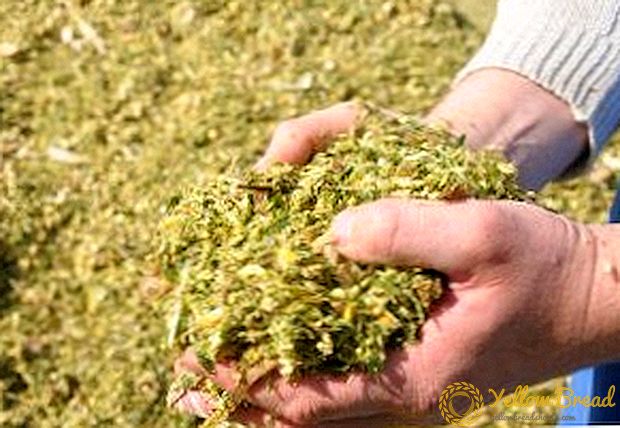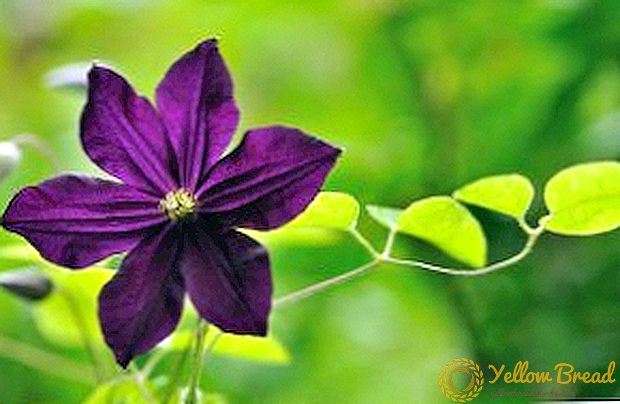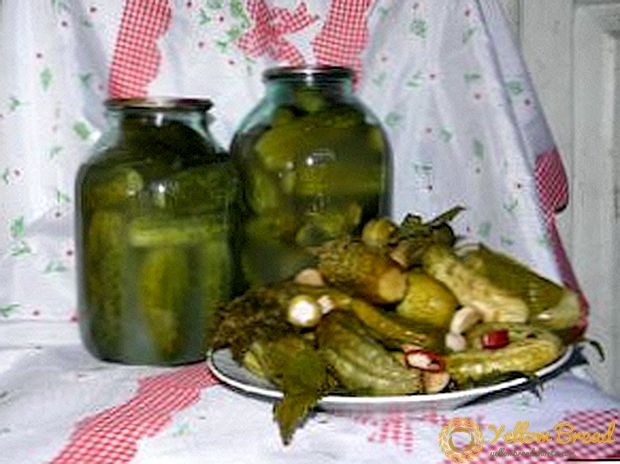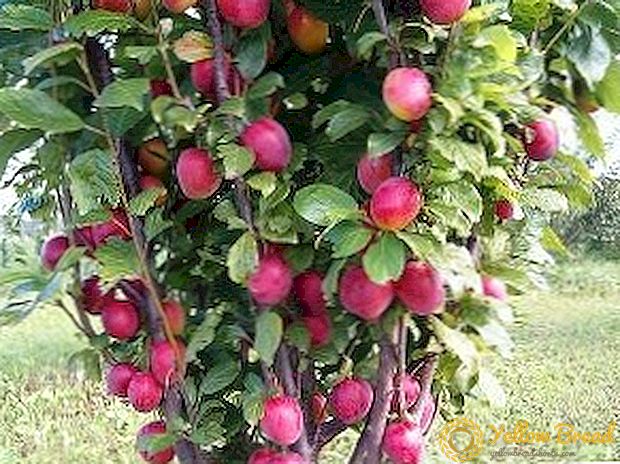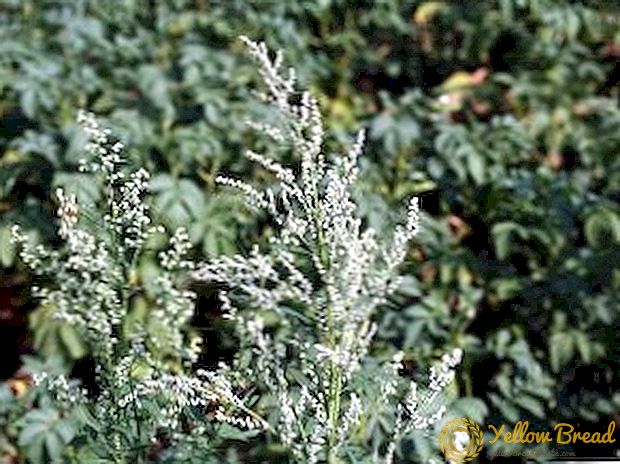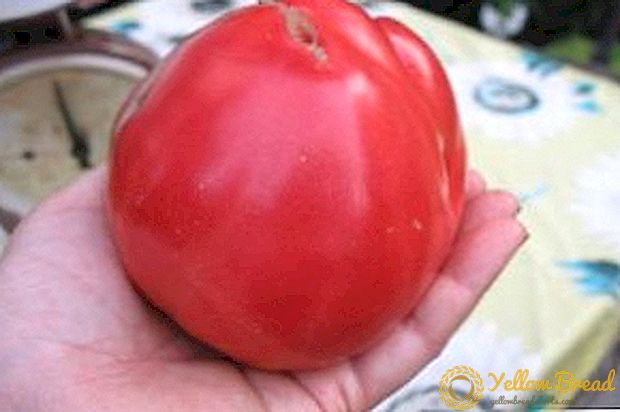 Phlox - An extensive and diverse group of garden flowers, which includes both tall shrubs and low-growing plants, almost creeping along the ground. But almost all phlox - perennial flowers. Gardeners attract beautiful abundant inflorescences of various shapes and colors.
Phlox - An extensive and diverse group of garden flowers, which includes both tall shrubs and low-growing plants, almost creeping along the ground. But almost all phlox - perennial flowers. Gardeners attract beautiful abundant inflorescences of various shapes and colors.
Picking up several types of plants, you can secure a blooming garden from spring to late autumn. Let's understand in detail the most popular varieties of phlox that are grown in our strip.
- Phlox Aida (Aida)
- Phlox Alenushka (Alenuschka)
- Phlox Snow White (Belosnezka)
- Phlox Baikonur
- Phlox Bonnie Maid (Bonny Maid)
- Phlox Viking (Viking)
- Phlox Ernst Immer (Ernst Immer)
- Phlox Zefir (Zefir)
- Phlox Douglas (Douglasii)
- Phlox Diablo (Diabolo)
- Phlox Europe (Europe)
- Phlox Oleander (Oleander)
- Phlox Otello (Otello)
- Phlox Panama (Panama)
- Phlox Pastoral
- Phlox Tenor (Tenor)
- Phlox Salmon Glow
- Phlox Starfire (Starfire)
- Phlox Felix (Felix)
- Phlox Flamingo
Phlox Aida (Aida)
 This flower grows to 60-70 cm, although under favorable conditions it can reach 90 cm. It has oval or lanceolate leaves of rich green color. The flowers appear in the second half of July, reach a diameter of 3.5 cm, have a rich pink hue, which turns into pink-purple as it blossoms.
This flower grows to 60-70 cm, although under favorable conditions it can reach 90 cm. It has oval or lanceolate leaves of rich green color. The flowers appear in the second half of July, reach a diameter of 3.5 cm, have a rich pink hue, which turns into pink-purple as it blossoms.
It grows in sunny places, but tolerates partial shade.Plant preferably in fertile soil, which is regularly moistened, especially in the hot summer season. Fertilizers are applied moderately. The plant is hardy.
Phlox Alenushka (Alenuschka)
 The bush of this variety reaches 80 cm, has many leaves. Stems strong, but rare. The phlox flower "Alyonushka" has 4 cm in diameter, a milky-white shade with a pronounced raspberry center. Flowering time is medium. The variety is easily recognizable, quite popular, but slowly propagates, grows, and is also very picky about growing.
The bush of this variety reaches 80 cm, has many leaves. Stems strong, but rare. The phlox flower "Alyonushka" has 4 cm in diameter, a milky-white shade with a pronounced raspberry center. Flowering time is medium. The variety is easily recognizable, quite popular, but slowly propagates, grows, and is also very picky about growing.
Phlox Snow White (Belosnezka)
 The variety was bred in 1952. Differs in long and violent flowering. Wide-pyramidal inflorescences have a white color and a light pinkish shade of the middle at the expense of a colored tube. In this case, the buds have a brownish-purple color. Flowers reach 3.5-3.8 cm in diameter.
The variety was bred in 1952. Differs in long and violent flowering. Wide-pyramidal inflorescences have a white color and a light pinkish shade of the middle at the expense of a colored tube. In this case, the buds have a brownish-purple color. Flowers reach 3.5-3.8 cm in diameter.
Phlox Baikonur
 The inflorescences of this species have medium size and pale pink color, which does not fade in the sun. The plant itself can be up to 80 cm in length. Looks great in a flowerbed, and in cut form.
The inflorescences of this species have medium size and pale pink color, which does not fade in the sun. The plant itself can be up to 80 cm in length. Looks great in a flowerbed, and in cut form.
Phlox Bonnie Maid (Bonny Maid)
 The stems of this plant can reach 70 cm. The inflorescence is round, dense, blue or purple, which always has very delicate shades.
The stems of this plant can reach 70 cm. The inflorescence is round, dense, blue or purple, which always has very delicate shades.
Phlox Viking (Viking)
 Thanks to spherical inflorescences, this variety of phlox is perceived as hydrangea or dahlia. The bush grows compactly, firmly, reaching 60 cm. Differs in winter hardiness and ease of reproduction. Phlox flowers are 3.7 cm in diameter, pink color with a small crimson ring in the center, which is slightly blurred with rays. Good for use in flower gardens of various types.
Thanks to spherical inflorescences, this variety of phlox is perceived as hydrangea or dahlia. The bush grows compactly, firmly, reaching 60 cm. Differs in winter hardiness and ease of reproduction. Phlox flowers are 3.7 cm in diameter, pink color with a small crimson ring in the center, which is slightly blurred with rays. Good for use in flower gardens of various types.
Phlox Ernst Immer (Ernst Immer)
 This decorative flower was received in 1947. It is characterized by resistance to fungal diseases, a strong pleasant aroma and pale lilac coloring of flowers collected in a pyramidal inflorescence size of 19x14cm. This summer phlox: flowering lasts about 25-30 days in July.Planted for cutting in beds, at the borders, in group plantings.
This decorative flower was received in 1947. It is characterized by resistance to fungal diseases, a strong pleasant aroma and pale lilac coloring of flowers collected in a pyramidal inflorescence size of 19x14cm. This summer phlox: flowering lasts about 25-30 days in July.Planted for cutting in beds, at the borders, in group plantings.
Phlox Zefir (Zefir)
 Launched in 1989. It has a compact bush with strong stems up to 70 cm in length. It tolerates both high humidity during heavy rains and long heat.
Launched in 1989. It has a compact bush with strong stems up to 70 cm in length. It tolerates both high humidity during heavy rains and long heat.
It blooms long and lushly dense rounded inflorescences, which are formed from delicate white flowers with a faint purple center and pinkish shadows on the leaves. The flower has a size of about 4.2 cm. It multiplies well and quickly. Planted for pruning, in flower beds or individually.
Phlox Douglas (Douglasii)
 The plant has small leaves that grow close to each other due to short internodes. Small flowers on short pedicels have bright and amicable flowering.
The plant has small leaves that grow close to each other due to short internodes. Small flowers on short pedicels have bright and amicable flowering.
This low-growing phlox forms a low shrub with a diameter of about 30 cm. It looks good on alpine hills and flower beds with stones. It grows slowly, but hybrid varieties show accelerated growth and larger flowers.
Phlox Diablo (Diabolo)
 This variety has a special color flowers. The crimson-red base has a peephole of a darker shade and does not fade.
This variety has a special color flowers. The crimson-red base has a peephole of a darker shade and does not fade.
Inflorescences dense and large. The flower reaches 3.2 cm in diameter, and the bush itself can grow up to 70 cm, which is considered an average size.
Petals retain their shape and color, despite the different weather conditions.
Phlox Europe (Europe)
 This variety was bred in Germany a long time ago. Phlox Europa has a bright white color with a carmine eye flower. The flower reaches a diameter of 3.7 cm, and dense dense inflorescences - 20x12 cm. Straight stems are stretched to an average length of 50 cm. Flowering can be expected from the first decade of July during the month.
This variety was bred in Germany a long time ago. Phlox Europa has a bright white color with a carmine eye flower. The flower reaches a diameter of 3.7 cm, and dense dense inflorescences - 20x12 cm. Straight stems are stretched to an average length of 50 cm. Flowering can be expected from the first decade of July during the month.
Phlox Oleander (Oleander)
 The variety is distinguished by stellate flowers of a dull pink color, which reach a diameter of 3.8 cm and have very bright and large crimson eyes. Inflorescences loose, medium size.
The variety is distinguished by stellate flowers of a dull pink color, which reach a diameter of 3.8 cm and have very bright and large crimson eyes. Inflorescences loose, medium size.
The stems have a dark color, they are solid and durable, grow to about 70 cm, although in favorable conditions they can reach 90 cm. The leaves closer to the top also have a dark color. In cool conditions, it does not multiply well and grows.
Phlox Otello (Otello)
Variety distinguishes loose oval inflorescence size 18h13 cm, the flowers of which have a dark lilac color with a bright lilac eye. And in the evening the flowers get a blue tint.
Flowers in diameter reach 3.5 cm. Appear on a bush from about the middle of July and bloom up to a month. The bush has upright stems up to 90 cm in height. Othello is a variety of phlox that is relatively resistant to fungal diseases. Cultivated for cutting, in a flowerbed or in a group of plants.
Phlox Panama (Panama)
 This plant has erect stems that extend to 80 cm in length. Gives white flowers up to 3.2 cm in diameter, begins to bloom towards the end of July for about 35 days.
This plant has erect stems that extend to 80 cm in length. Gives white flowers up to 3.2 cm in diameter, begins to bloom towards the end of July for about 35 days.
Loose pyramidal inflorescence reaches the size of 18x12 cm. Resistance indicators against fungal diseases are average. Planted for cutting, in a flower bed or as a single plant.
Phlox Pastoral
 The variety is distinguished by soft pink flowers with a white center and a carmine ring. They grow up to 4 cm in diameter. Collected in loose pyramidal inflorescences measuring 20x10 cm. Flowering time - from mid-July, about a month. It shows moderate resistance to fungal diseases. Planted in a flowerbed in a group with other plants, individually or for cutting.
The variety is distinguished by soft pink flowers with a white center and a carmine ring. They grow up to 4 cm in diameter. Collected in loose pyramidal inflorescences measuring 20x10 cm. Flowering time - from mid-July, about a month. It shows moderate resistance to fungal diseases. Planted in a flowerbed in a group with other plants, individually or for cutting.
Phlox Tenor (Tenor)
 This variety has crimson flowers with a light carmine core. In diameter, they reach 4 cm and form a pyramidal loose inflorescence no larger than 20x16 cm in size. It dissolves in mid-July, blooms up to 35 days. The stems are erect up to 60 cm in length. It is moderately resistant to fungal diseases. Planted for cutting, in group beds, in individual planting.
This variety has crimson flowers with a light carmine core. In diameter, they reach 4 cm and form a pyramidal loose inflorescence no larger than 20x16 cm in size. It dissolves in mid-July, blooms up to 35 days. The stems are erect up to 60 cm in length. It is moderately resistant to fungal diseases. Planted for cutting, in group beds, in individual planting.
Phlox Salmon Glow
 As the name implies, the dominant color of flowers is salmon-pink. Bottom petals are almost white, white is the middle of the flower. Forms a large inflorescence with flowers up to 4.8 cm, which do not deteriorate during precipitation. Semi-bushy bush consists of stems of medium strength up to 70 cm in length. It looks very impressive, although it slowly grows.
As the name implies, the dominant color of flowers is salmon-pink. Bottom petals are almost white, white is the middle of the flower. Forms a large inflorescence with flowers up to 4.8 cm, which do not deteriorate during precipitation. Semi-bushy bush consists of stems of medium strength up to 70 cm in length. It looks very impressive, although it slowly grows.
Phlox Starfire (Starfire)
The variety is distinguished by velvety red-maroon bright flowers that do not fade in the sun. When the bush grows, it becomes quite strong. Stems reach a height of 80 cm. The leaves and young shoots are brown-red in color.
Phlox Felix (Felix)
 Another bright raspberry variety that has a carmine center and a flower in diameter up to 3.5 cm. Inflorescences are formed in the form of a pyramid, have an average density and size of 18x12 cm. Flowering time - from mid-July for 35 days. Erect stems are quite high — up to 110 cm. They are moderately resistant to the fungal disease. Planted for cutting, in a group planting or individually.
Another bright raspberry variety that has a carmine center and a flower in diameter up to 3.5 cm. Inflorescences are formed in the form of a pyramid, have an average density and size of 18x12 cm. Flowering time - from mid-July for 35 days. Erect stems are quite high — up to 110 cm. They are moderately resistant to the fungal disease. Planted for cutting, in a group planting or individually.
Phlox Flamingo
 Smooth-tone salmon-pink flower with a bright raspberry-red peephole. The flowers are collected in large inflorescences of medium density pyramidal shape. The bush grows compact and durable. Excellent winter and shows good endurance.
Smooth-tone salmon-pink flower with a bright raspberry-red peephole. The flowers are collected in large inflorescences of medium density pyramidal shape. The bush grows compact and durable. Excellent winter and shows good endurance.
Phloxes can be used to translate practically any landscape designs.They help to create a mixborder in a certain color scheme, fence, or you can simply grow them to cut.
Phloxes have a variety of shades, including blue-violet and blue flowers, which are not so often found in the flora. In addition, many of the varieties feel great in our climate.

